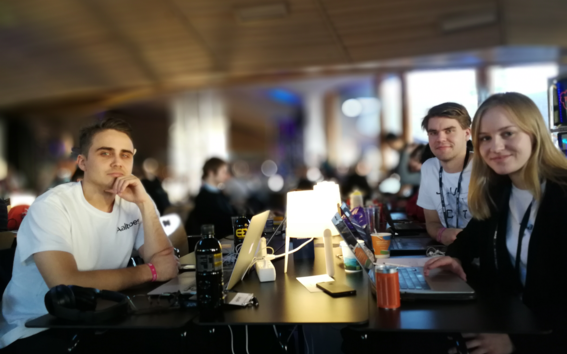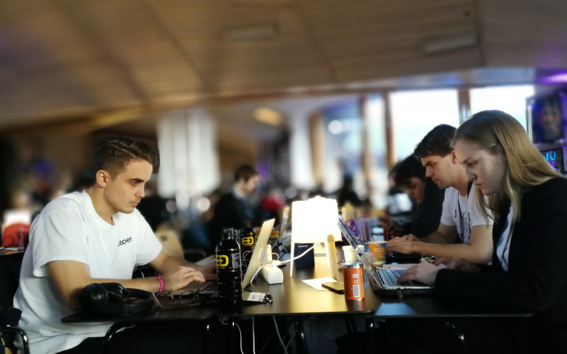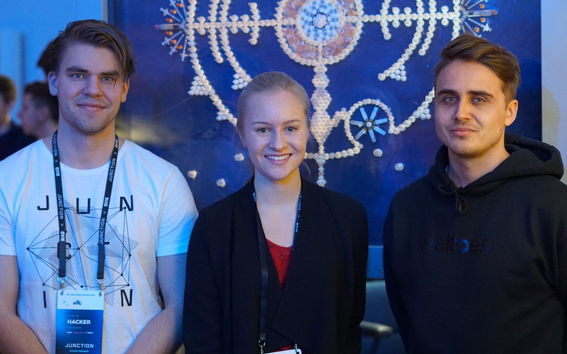Junction brings together businesses and the new IT generation

The event isn’t held solely to facilitate an intense 48-hour slog of no sleep, coffee and ambitious coding. Junction’s special feature is the encounters between businesses and young IT professionals it promotes. Firms come in search of skilful and creative solutions for real problems, while the students get to showcase their abilities and ideas to potential future employers. The occurrence of encounters was not left to chance, as participants and corporate representatives were encouraged to use various matchmaking tools over the weekend.
More than 60 cooperation partners representing different sectors were in attendance to present their challenges on a variety of themes. Tasks were solved in the fields of, for example, game development, artificial intelligence, space technology, transport services, the Internet of Things, intelligent construction and health technology.
Aalto University presented the hackers with a joint challenge together with the University of Tampere, Tampere University of Technology and VTT Technical Research Centre of Finland. Participants got to think up and realise entertaining content from data collected by Helsinki’s electric buses.
Tackling artificial intelligence and transports of the future
Junction is the result of volunteer student activity conducted in the sphere of the Aalto Entrepreneurship Society. The students currently running Aaltoes once again took part, this time parked firmly behind their keyboards.
Stella Tuovinen, Ville Lehto and Kasimir Hellman went for a challenge posed by the Finnish Transport Agency and the Finnish Transport Safety Agency. It required them to develop a wholly new transport service for rural areas, where public transport connections are poor. The team selected the Eastern Finnish town of Lieksa as its target and started designing an application that enables users to plan their journey using combinations of, for example, ride shares, on-demand robotic cars and likewise driverless trunk transport lines.

“We used the two agencies’ open data on the region’s traffic volumes, and started designing the service on this basis. Friday was spent brainstorming, after which the work was just coding,” says Stella.
They came across their first learning experience on Saturday. The team built its application using Google’s map service and discovered a number of challenges under its hood.
'Charting journeys and routes on the Google Maps programming interface proved more difficult than we’d anticipated, but we did manage to finish the service in the end.'
The end result pleased the jury as well: on Sunday, the team’s service idea was awarded as the hackathon’s best solution.
Even though processing their own project from the idea stage to a real product, game, program or service was, for many, the main reason for toiling over the weekend, Junction also offered a comprehensive experience.

“We learned a lot, but we also knew that the weekend would be epic in other ways. The other participants, the challenges and all the ancillary activities made Junction much more awesome than we had expected!”
- Published:
- Updated: